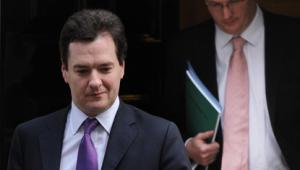By Nick Mann | 5 December 2012
The government has ditched plans for local pay in the civil service, NHS and Prison Service, but will consult on giving schools more power to set salaries in line with performance, Chancellor George Osborne revealed today.
In his Autumn Statement speech, Osborne committed the government to accepting the recommendations of the independent pay review bodies on local pay, which have also been published today.
The bodies found no case to introduce new centrally determined local pay rates or zones, but said there should be ‘greater use of existing flexibilities’. There will also be no centrally imposed changes to the existing geographical structure of pay in the civil service.
However, Osborne noted that the School Teachers’ Review Body had recommended that individual schools be given ‘much greater freedom’ to link pay to performance. Details of exactly how this would work will be published for consultation by the Department for Education.
Plans to introduce more ‘market-facing’ pay arrangements for the public sector were originally announced in last year’s Autumn Statement, but the proposals have attracted opposition from both inside and outside the coalition government.
Brian Lightman, general secretary of the Association of School and College Leaders, said schools and colleges had been clear in their support for the retention of a national system of pay and conditions for teachers.
‘We still await the detail of these proposals but a move to local bargaining has the potential to cause massive destabilisation in an unregulated market, distracting school leaders and governors from their core focus on teaching and learning,’ he said.
Osborne’s speech confirmed an end to the public sector pay freeze. The basic pay of state employees will rise by an average of 1%, he said. He added that while pay for workers across the public and private sector had risen by an average of 10% since 2007, out-of-work benefits had gone up by around 20%.
‘That’s not fair to working people who pay the taxes that fund them,’ Osborne said. Income of people on benefits would also now rise by 1%, in line with the average public sector pay increase, but below the rate of inflation.
‘That’s fair and it will ensure that we have a welfare system that Britain can afford.’
In a move he said would save £3.7bn in 2015/16, Osborne announced a 1% annual increase for the next three years in ‘most working age benefits’, including Jobseeker’s Allowance, Employment and Support Allowance and Income Support.
Elements of the Child Tax Credit and Working Tax Credits will also be subject to the same below-inflation increases, while Child Benefit, which is currently frozen, will rise by 1% for two years from April 2014.
Documents published by the Office for Budget Responsibility alongside the chancellor’s speech show that, as government departments cut costs, almost 1 million public sector employees are expected to lose their jobs between the start of 2011 and early 2018.
During the Budget in March, the independent body forecast a 730,000 decline in the public sector workforce between the start of 2011 and 2017, but the OBR has now taken on board spending assumptions for 2017/18. In June, 196,000 employees in the further and higher education sector were reclassified as private sector employees, and the OBR noted that, without this change, the reduction in the workforce would be around 1.1 million.




















